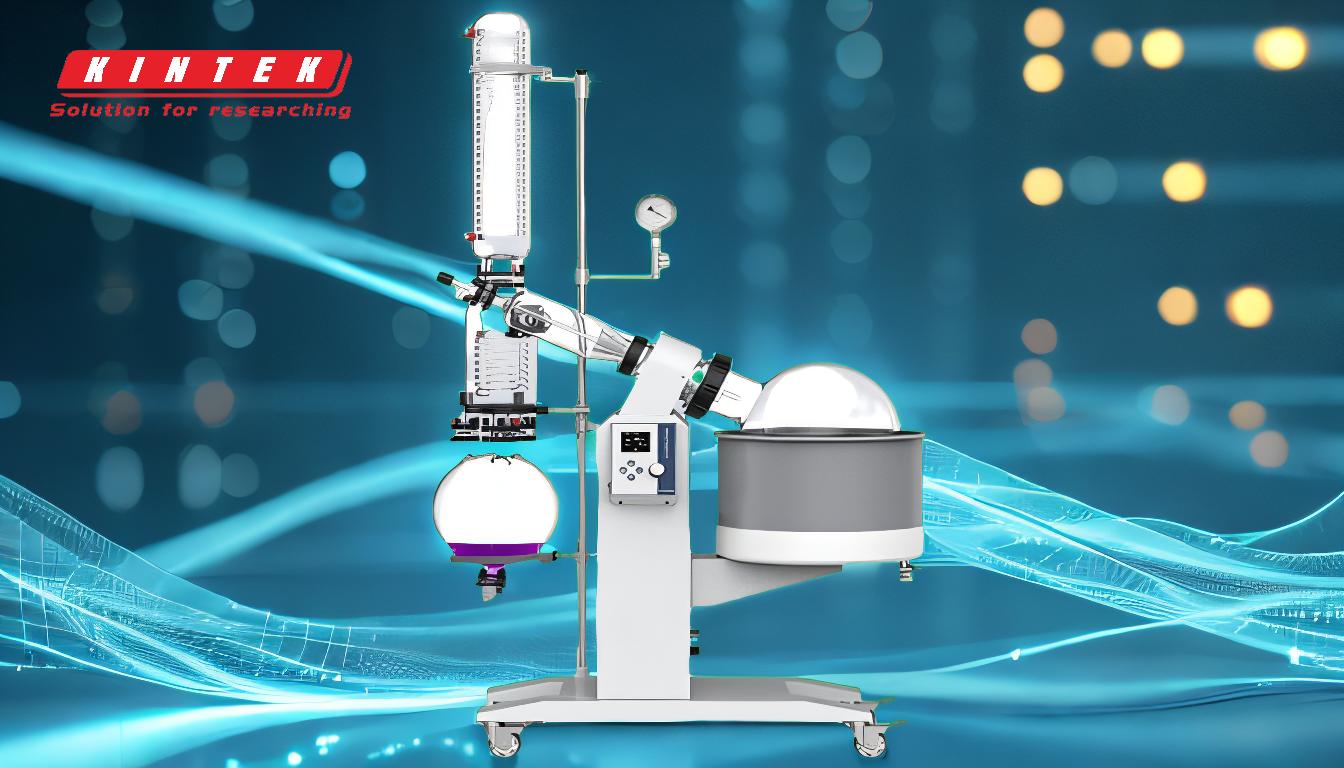A rotary evaporator is a sophisticated laboratory instrument used for the efficient and gentle removal of solvents from samples by evaporation. Its design integrates several key components that work together to achieve this purpose. The main parts include a motor unit, a vapor duct, a vacuum system, a heated fluid bath, a condenser, a condensate collection flask, and a mechanism for lifting the evaporating flask. These components ensure controlled evaporation, condensation, and collection of solvents, making the rotary evaporator an essential tool in chemistry and biochemistry labs for processes like distillation, concentration, and solvent recovery.
Key Points Explained:

-
Motor Unit
- The motor unit is the driving force behind the rotation of the evaporating flask.
- It rotates the flask at a controlled speed, ensuring even distribution of the sample and promoting efficient evaporation.
- The rotation also helps prevent bumping (sudden boiling) of the sample, which can lead to loss of material or contamination.
-
Vapor Duct
- The vapor duct serves as the central axis for the rotating flask and acts as a vacuum-tight conduit for the vaporized solvent.
- It connects the evaporating flask to the condenser, ensuring that the vapor is efficiently transported for condensation.
- The duct is typically made of glass or another chemically resistant material to withstand the solvents used.
-
Vacuum System
- The vacuum system reduces the pressure inside the rotary evaporator, lowering the boiling point of the solvent.
- This allows for gentle evaporation at lower temperatures, which is crucial for heat-sensitive samples.
- The vacuum pump or aspirator is connected to the system via tubing and is essential for maintaining the required pressure.
-
Heated Fluid Bath
- The heated fluid bath (usually a water bath) provides controlled heating to the evaporating flask.
- The temperature of the bath can be adjusted to optimize the evaporation rate without degrading the sample.
- The flask is partially immersed in the bath to ensure uniform heating.
-
Condenser
- The condenser cools the vaporized solvent, converting it back into a liquid for collection.
- It typically consists of a coil or a "cold finger" through which a coolant (such as water or a refrigerant) flows.
- The efficiency of the condenser is critical for recovering the solvent and preventing its loss.
-
Condensate Collection Flask
- The condensate collection flask captures the condensed solvent after it passes through the condenser.
- It is usually positioned below the condenser and is designed to be easily removable for emptying or analysis.
- The flask ensures that the recovered solvent is safely contained and can be reused or disposed of as needed.
-
Mechanical or Motorized Lifting Mechanism
- This mechanism allows the evaporating flask to be raised or lowered from the heated bath.
- It is particularly useful for controlling the immersion depth of the flask and for quickly removing the flask when the process is complete.
- The lifting mechanism enhances safety and convenience during operation.
-
Additional Components
- Bump Trap: A bump trap is often included to prevent the sample from splashing into the condenser or vacuum system during sudden boiling.
- Round-Bottom Flask: The sample is placed in a round-bottom flask, which is attached to the vapor duct and rotated by the motor.
- Receiving Flask: This flask collects the distilled solvent after condensation.
- Vacuum Tubing: Connects the vacuum pump to the system, ensuring a tight seal and proper pressure control.
By combining these components, a rotary evaporator provides a highly efficient and controlled environment for solvent removal, making it indispensable in laboratories for applications such as solvent recycling, sample concentration, and purification. Each part plays a critical role in ensuring the system's functionality, safety, and reliability.
Summary Table:
| Component | Function |
|---|---|
| Motor Unit | Rotates the evaporating flask for even sample distribution and evaporation. |
| Vapor Duct | Transports vaporized solvent to the condenser. |
| Vacuum System | Lowers pressure to reduce solvent boiling point. |
| Heated Fluid Bath | Provides controlled heating for the evaporating flask. |
| Condenser | Cools vaporized solvent for condensation. |
| Condensate Collection Flask | Collects condensed solvent for reuse or disposal. |
| Lifting Mechanism | Raises or lowers the evaporating flask for safety and convenience. |
| Additional Components | Includes bump traps, round-bottom flasks, and vacuum tubing. |
Discover how a rotary evaporator can optimize your lab processes—contact our experts today!











